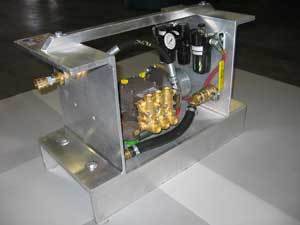
That outward motion is the essence of the solar wind. These charged particles slide like beads on a string along magnetic field lines attached to the sun. The wind consists mostly of hydrogen nuclei, or protons, which carryĪ positive charge, and electrons, which carry a negative charge. The solar wind originates in the million-degree gases of the solar corona, the filamentous aura that is seen glowing around the sun during an eclipse. Gave us some really interesting conditions to test all sorts of ideas about solar-terrestrial interactions."

Howard Singer of the Space Environment Center at the National Oceanic and Atmospheric Administration. "When we do experiments in space, we take whatever the sun gives us," said Dr. Scudder, a space scientist at the University of Iowa, said that in some respects the episode was the "all-time barn burner" in terms of the events it sparked in Earth's corner of space.
#Solar wind ram pressure series
That the relative calm set in motion a remarkable series of events that could help scientists unravel the mysteries of how the solar wind influences the environment, or "space weather," near Earth.ĭr. But instruments aboard nearly a dozen American, Russian and Japanese spacecraft have revealed On May 11, the solar wind dropped to a few percent of its normal density and its speed was cut in half. Waves that can knock out satellites, damage power grids and cause the northern and southern nights to glow like a giant ring of bonfires in the upper atmosphere. This solar wind sweeps outward at speeds of hundreds of miles per second, lashing the magnetic cocoon shielding Earth - called the magnetosphere - and releasing storms of high-energy particles and electromagnetic The magnetosphere ballooned, and a 'polar rain' fell. Scientists consider that wind, which originates just above the roiling surface of the sun, to be as ancient and unyielding as the solar system itself. He thin wind of interplanetary space blows with a ferocity unmatched by any desert, and on a scale that makes Earth look like a tiny blue oasis withinĪ wasteland billions of miles across. Join a Discussion on The Future of NASA.The results can significantly improve our understanding on the Jovian magnetospheric response modes to enhanced solar wind ram pressure, and the Jovian auroral mechanisms.When the Solar Wind Fell, Science Reaped a Windfall We found that during SW compression, both FAC and AP experience up-down-up trends, which is not revealed by any previous model, while could potentially explains many auroral observations. Therefore, we use three-dimensional global simulations to investigate how these proxies of auroral emission respond to enhanced SW ram pressure. In addition to the field-aligned current (FAC), Alfvénic power (AP) play an important role in regulating planetary auroral emissions. This inconsistency drives us to explore the auroral activities response to enhanced solar wind ram pressure through numerical simulations. According to this mainstream corotation breakdown model, the intensity of the Jovian ME is expected to decrease when the solar wind (SW) ram pressure increases, which is not fully consistent with auroral observations. The main emission (ME) of the Jovian aurora is thought to be related to the current system associated with the breakdown of plasma corotation in the middle magnetosphere.

However, the mechanisms of Jovian auroral emissions are not fully understood.


Jupiter has the largest magnetosphere and the most intense auroral emissions in the solar system.


 0 kommentar(er)
0 kommentar(er)
